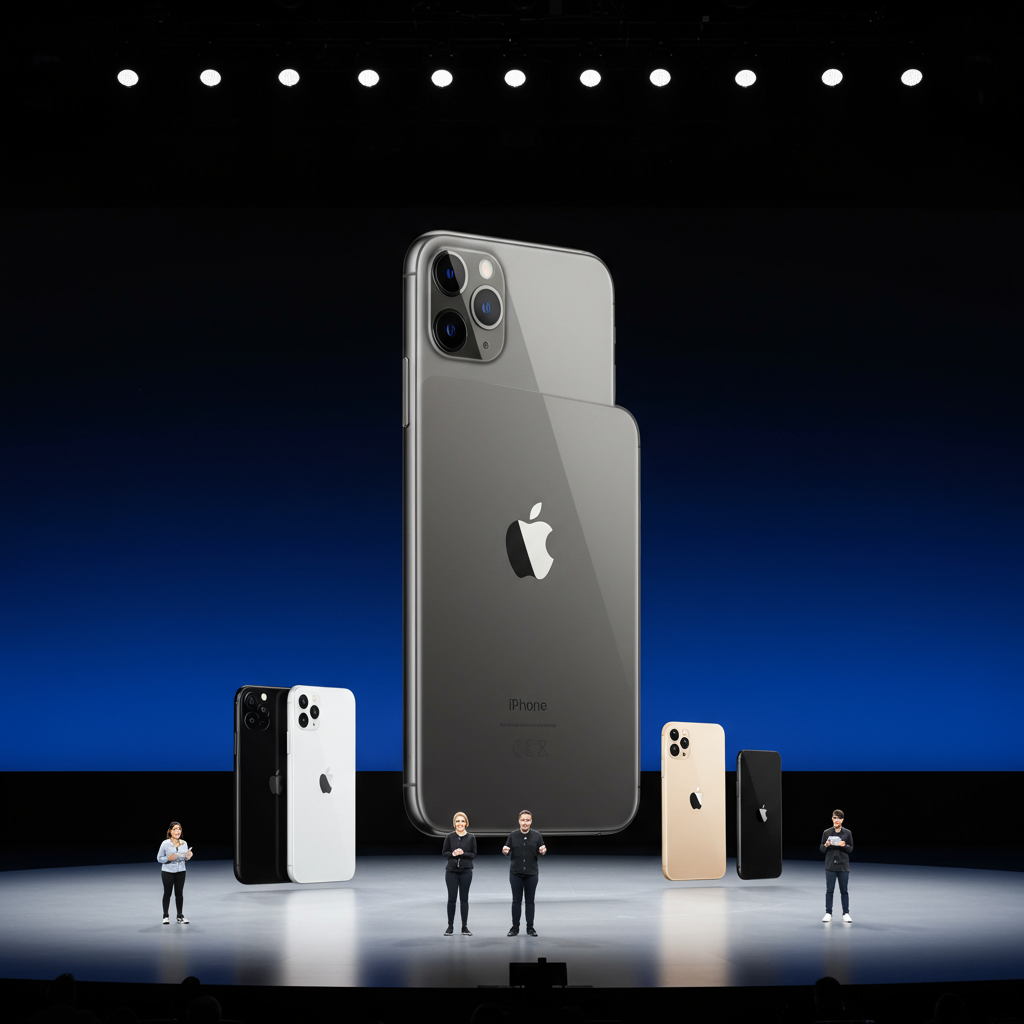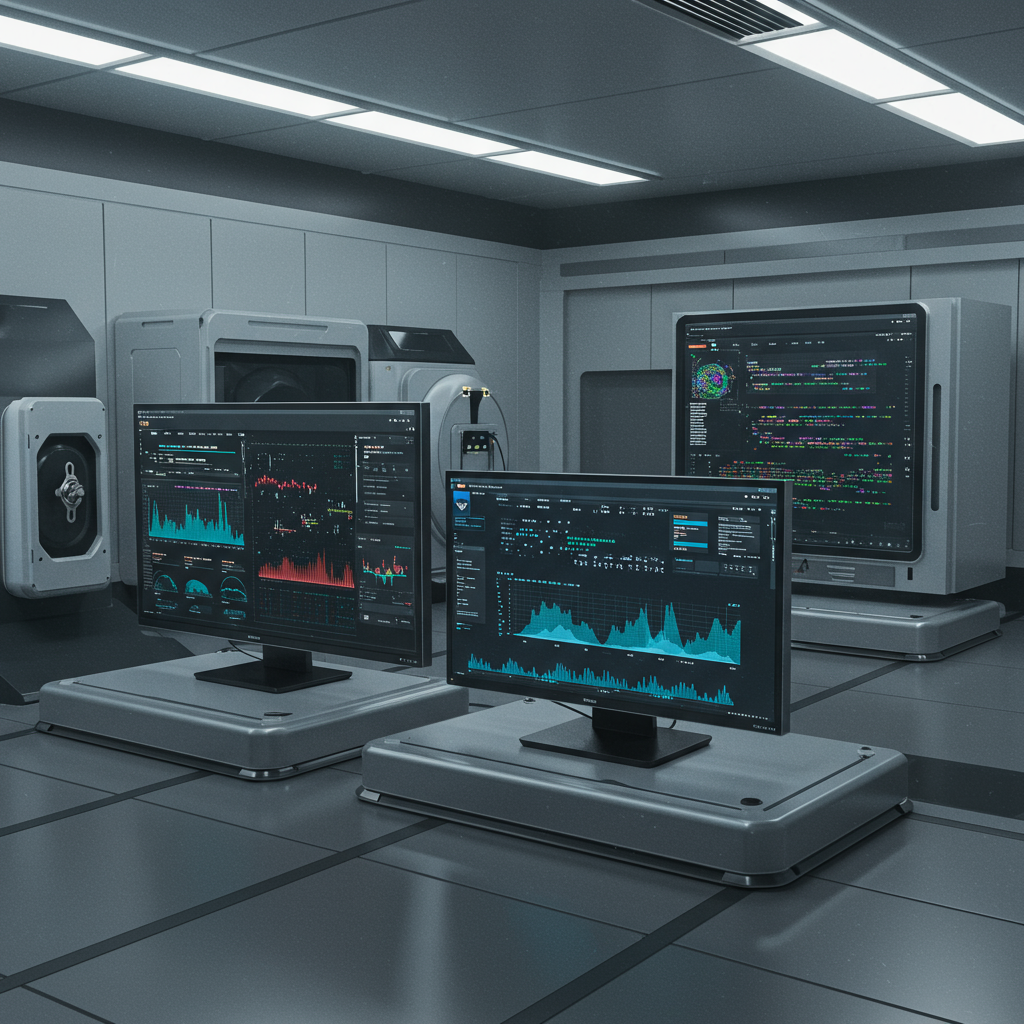Apple’s much-anticipated “Awe Dropping” event on September 9th is poised to unveil a significant hardware refresh, marking a critical moment for the tech giant. As many as seven new products are expected to debut, signalling the initial phase of a reported three-year transformation strategy. This event arrives with Apple facing intense competition in artificial intelligence and a fluctuating stock performance, yet it builds on strong third-quarter earnings and resilient iPhone sales.
Scheduled for 1 p.m. Eastern at Apple’s Cupertino headquarters, the event is more than just a product launch. It’s a strategic pivot designed to reinvent Apple’s hardware ecosystem, aligning devices with a unified aesthetic and preparing users for expanded spatial computing capabilities.
Apple’s Strategic Shift: “Awe Dropping” and “Liquid Glass”
The “Awe Dropping” invite itself offers clues about Apple’s new direction. Its thermal-imaging-like design, featuring vibrant oranges, blues, and greens, strongly hints at enhanced cooling systems, particularly a rumored vapor chamber cooling for the iPhone 17 Pro models. These colors may also preview new color options for the upcoming devices. CEO Tim Cook further teased this with a heat map video around the Apple logo, underscoring the invite’s symbolic depth.
This strategic event ushers in Apple’s “Liquid Glass” design language. This translucent, depth-focused interface represents the company’s most significant visual overhaul since iOS 7 in 2013. Inspired by the Vision Pro headset, Liquid Glass aims to establish a unified aesthetic across all Apple platforms. It also prepares users for the future of spatial computing, a key long-term ambition for Apple.
Despite recent financial resilience, including a 13.5% surge in iPhone revenue to $44.6 billion, Apple faces headwinds. The company has struggled to keep pace in the AI race, with its AI-powered Siri upgrade delayed until next year. It’s also battling an antitrust lawsuit from xAI. This has seen Apple’s stock decline by 15-19% in 2025, losing $75 billion in market value after the Siri delay announcement. The September event is Apple’s clear statement of intent to innovate its way through these challenges.
The iPhone 17 Lineup: A New Era of Thinness and Power
The centerpiece of Apple’s September 9th event will reportedly be the ultra-thin iPhone 17 Air. This model, the first iPhone to bear the “Air” moniker, is expected to replace the underperforming iPhone Plus line.
Introducing the iPhone 17 Air: Ultra-Thin, But With Caveats
The iPhone 17 Air is rumored to measure an astonishing 5.5mm at its thinnest point, significantly slimmer than the iPhone 16’s 7.8mm profile. It will likely feature a hybrid titanium-aluminum frame, weighing around 145 grams. Despite its svelte design, some early reports suggest it might be “rough around the edges” concerning performance. Bloomberg’s Mark Gurman indicated the 17 Air could “lag in both” camera and battery, describing its battery life as “subpar” compared to other iPhone 17 models. This is partly due to a thin 2,800 mAh battery pack.
The iPhone 17 Air is anticipated to sport a 6.6-inch 120Hz ProMotion display – a first for non-Pro iPhones. It will likely include a single 48-megapixel rear camera and a basic A19 chip. Despite earlier speculation about a port-less design, it is confirmed to retain a charging port. With an anticipated price matching the current iPhone Plus at $899, the iPhone 17 Air is seen as a “stepping stone” towards a long-rumored foldable iPhone expected in 2026.
iPhone 17, 17 Pro, and 17 Pro Max: Core Enhancements
The standard iPhone 17 model is expected to receive an upgraded 24-megapixel front-facing camera. All iPhone 17 models, including the standard version, will reportedly feature 120Hz ProMotion displays, enhancing user experience.
The iPhone 17 Pro and iPhone 17 Pro Max are set for substantial upgrades. They will feature a larger, pill-shaped camera bump, moving away from Apple’s traditional squircular module. This new design may even resemble Google Pixel’s width-spanning camera bar. The Pro models will reportedly include a 48-megapixel telephoto lens with an enhanced 8x optical zoom, a significant jump from the previous 5x. For improved durability and reduced weight, these models are expected to feature primarily aluminum backs, departing from the current titanium. New color options like bold orange and dark blue are rumored, alongside traditional shades.
Across the entire iPhone 17 lineup, a default storage of 256GB is anticipated, potentially accompanied by a $50 price increase. This could be marketed as “better value” for consumers.
iOS 26: A New Visual and Intelligent Experience
All new iPhone 17 models will ship with iOS 26 preinstalled. This updated operating system aligns its naming convention with the release year and introduces the “Liquid Glass” visual design. While some transparency effects were scaled back in beta, the OS features major updates to the Phone and Photos apps.
Crucially, iOS 26 significantly leverages artificial intelligence. New AI features include live translation in Phone, FaceTime, and Messages. It also offers a sensitive content warning for child accounts, using on-device machine learning to detect nudity. Visual Intelligence allows users to search image elements. Quality-of-life improvements include group text polls and a customizable snooze alarm. iOS 26 will be compatible with iPhone 11 and later models.
Apple Watch & AirPods: Health, Connectivity, and Sound Innovation
Beyond iPhones, Apple is set to refresh its wearables with advanced health features and enhanced connectivity.
Apple Watch Series 11 and Ultra 3: Health and Adventure
The Apple Watch Series 11 is expected to maintain a familiar design but will focus on health monitoring. It may introduce blood-pressure trend tracking to alert users about hypertension patterns. An updated S11 chip and 5G RedCap connectivity promise faster data speeds. Blood oxygen tracking is also set to be re-enabled globally.
For outdoor enthusiasts, the Apple Watch Ultra 3 is highly anticipated. This model could be the first Apple Watch to feature standalone satellite connectivity for emergency SOS and text messaging in remote areas. It will offer improved 5G, the largest and brightest Apple Watch display to date, and an enhanced charging coil for faster charging (80% in 30 minutes). Both watches will run watchOS 26, bringing features like Workout Buddy and new gestures.
AirPods Pro 3: Next-Gen Audio with Health Monitoring
The third-generation AirPods Pro 3 are also on the horizon. These premium earphones will reportedly introduce heart-rate monitoring via LED optical sensors in the ear canal. Other enhancements include improved Active Noise Cancellation, enhanced sound quality, and a faster H3 audio chip. Potential additions include temperature monitoring, real-time translation features, and a slimmer design with a concealed status LED. A slimmer charging case with a capacitive button is also rumored.
Beyond the Immediate Event: Apple’s Ambitious Long-Term Roadmap
The September 9th event is merely the opening chapter of Apple’s broader strategic vision. The company has an ambitious long-term roadmap that extends years into the future.
By fall 2026, Apple is expected to launch its first foldable iPhone. This device is rumored to feature a book-style design with a 7.8-inch inner display and a 5.5-inch outer screen. It will include four cameras, Touch ID, and Apple’s second-generation cellular modem, with an estimated price around $2,000.
Looking even further ahead, for the iPhone’s 20th anniversary in 2027, an “iPhone 20” is rumored. This radical device could feature an all-glass design with four-sided curved glass and no bezels. This aligns perfectly with the “Liquid Glass” interface and fulfills former design chief Jony Ive’s vision of a “single sheet of glass.”
Central to this long-term vision are Apple’s spatial computing ambitions. CEO Tim Cook is reportedly prioritizing the launch of true AR glasses before competitors. Apple aims to release lightweight AR glasses by 2027 and multiple Vision Pro iterations through 2028, including a “Vision Air” model in 2027, potentially 40% lighter than the current version. The company also plans to ship over 10 million AR/VR products annually by 2027, gradually acclimating users to spatial computing concepts through features like iOS 26’s 3D photo effects.
While the September event primarily focuses on iPhones, Apple Watch, and AirPods, other products may receive updates later in 2025 or in 2026. These include new iPads (11-inch and 13-inch Pro models with M5 chip), new Mac desktops and MacBooks (also with M5 chip), an upgraded Apple TV 4K (A17 Pro chip), a HomePod Mini 2, and AirTags 2 with improved UWB chips.
Availability and Pricing Expectations
The “Awe Dropping” event will be livestreamed on September 9th for global viewing. Pre-orders for the new iPhone 17 lineup are expected to begin on September 12th, with general availability around September 19th.
Pricing for the new devices remains a key consideration. While Apple’s expanded US manufacturing partners could offer some protection from potential tariffs, price increases are still possible. The rumored doubling of default iPhone 17 storage to 256GB might see a $50 price increase, though Apple will likely frame this as “better value” for consumers.
Frequently Asked Questions
What is Apple’s “Liquid Glass” design language?
Apple’s “Liquid Glass” design language is a new translucent, depth-focused interface representing the most significant visual overhaul since iOS 7 in 2013. Inspired by the Vision Pro headset, it aims to create a unified aesthetic across Apple’s platforms. It’s also designed to prepare users for expanded spatial computing capabilities, providing a cohesive visual experience across future devices.
When and where can I watch Apple’s “Awe Dropping” September event?
Apple’s “Awe Dropping” event is scheduled for Tuesday, September 9, 2025. It will begin at 1 p.m. Eastern (10 a.m. Pacific) and will be livestreamed globally from Apple’s Cupertino, California headquarters. You can typically watch it on Apple’s official website, YouTube channel, and through the Apple TV app.
Is the new iPhone 17 Air expected to have good battery life?
Early reports and analyst predictions suggest the iPhone 17 Air’s battery life might be “subpar” compared to the base-level iPhone 17 or Pro models. This is primarily due to its ultra-thin design (approximately 5.5mm), which necessitates a smaller, 2,800 mAh battery pack. While its slim profile is a major design highlight, consumers prioritizing long battery life might consider other models in the iPhone 17 lineup.
Conclusion
Apple’s “Awe Dropping” September event is shaping up to be a pivotal moment. With the ultra-thin iPhone 17 Air leading a lineup of new products, combined with significant advancements in Apple Watch and AirPods, the company is demonstrating a clear focus on hardware innovation. This refresh, underpinned by the “Liquid Glass” design language and a strategic commitment to spatial computing, aims to redefine Apple’s ecosystem for the coming years. Despite AI challenges, the event reinforces Apple’s ability to captivate and push the boundaries of consumer technology, setting the stage for an exciting future.



